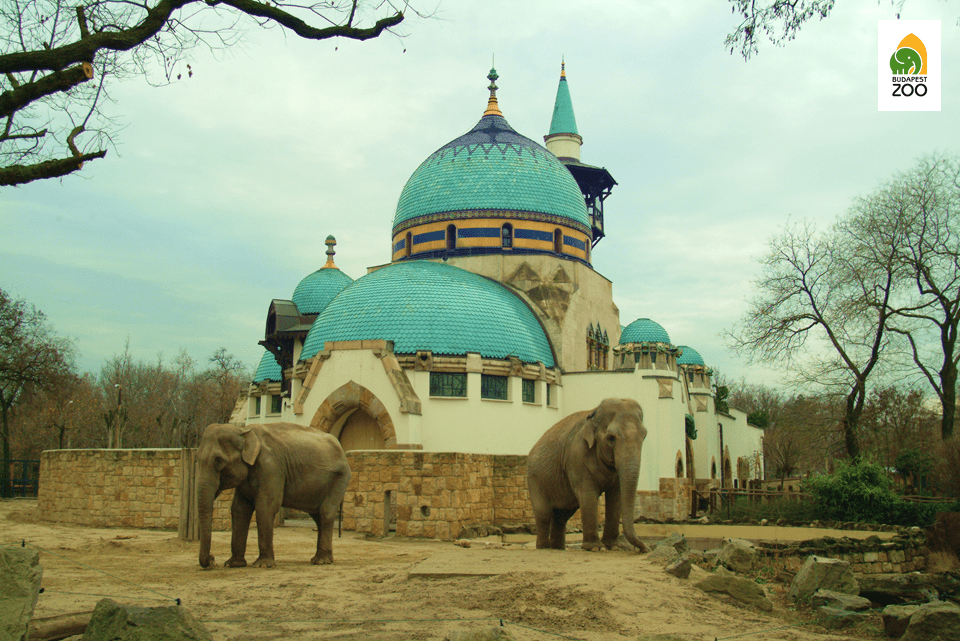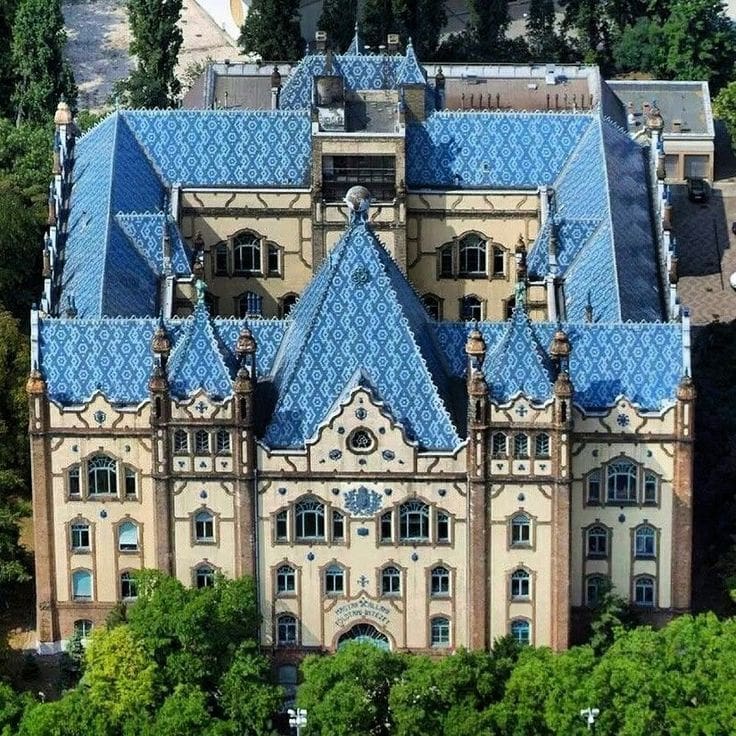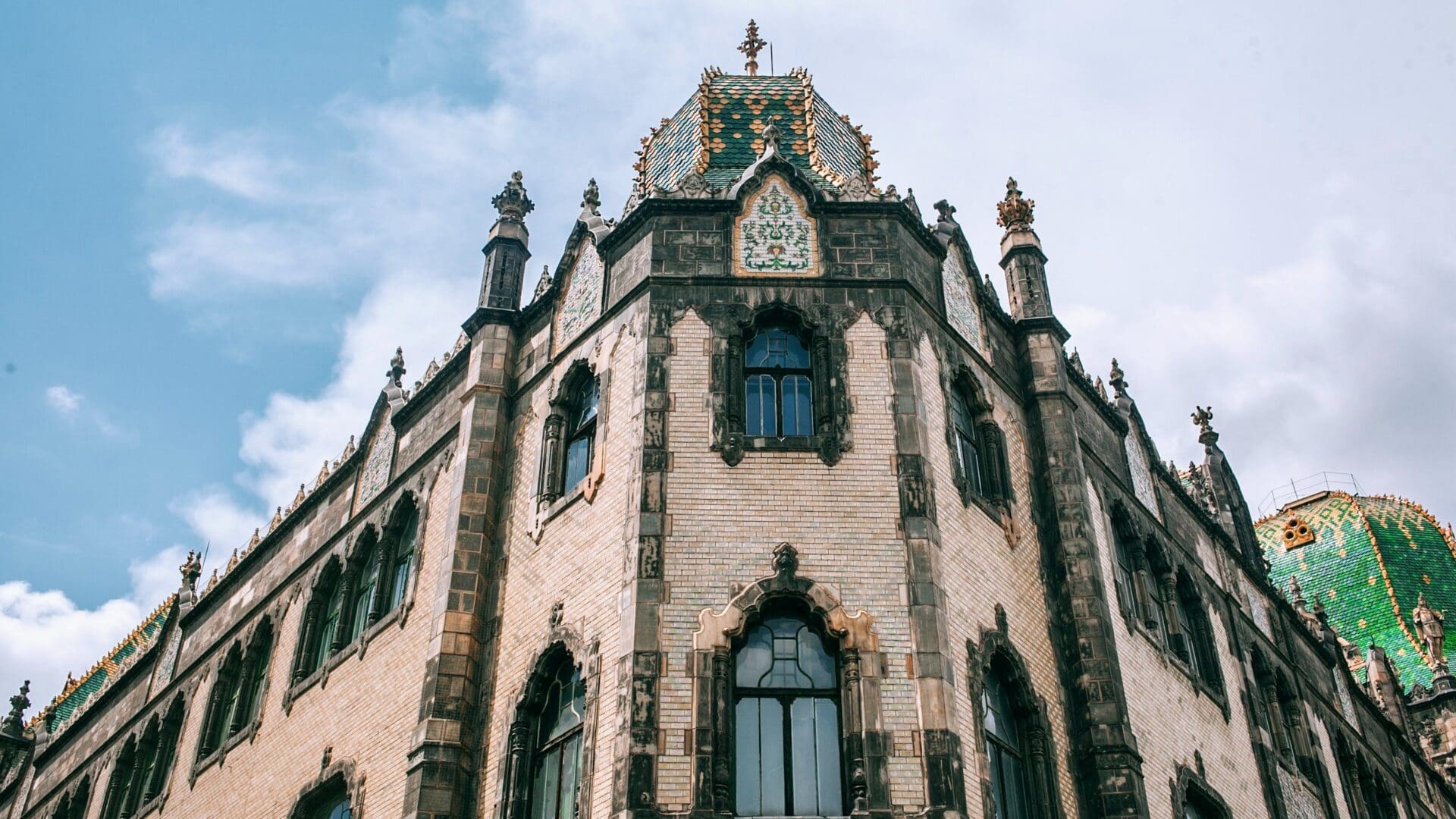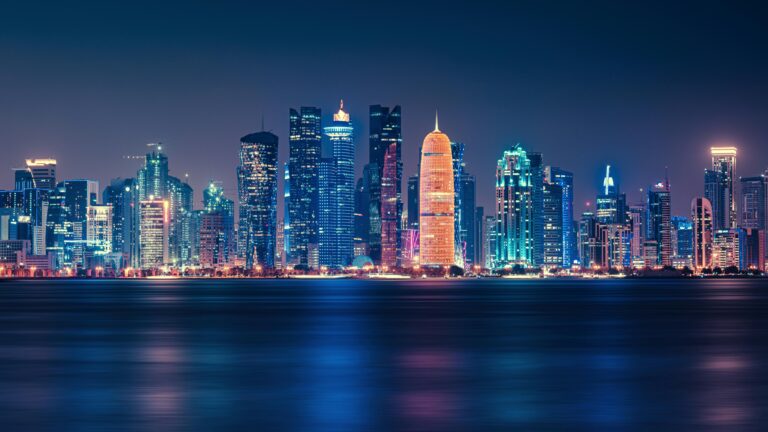Paris, Hong Kong, Chicago, Budapest… Each city has different features, characteristics, history, and cultural traditions, which fundamentally shaped their formation and development over the centuries. Budapest, for one, has always conquered the hearts of millions of tourists with its own charm. Of course, there are many reasons for this, but one of the most determining ones is the capital’s architecture.
It is the dominance of steel and glass skyscrapers in New York, the multitude of red buildings in Bologna, and the inward-sloping houses and narrow canals in Amsterdam that first come to mind when thinking of these cities. On the other hand, the most characteristic sights of Budapest are its iconic Art Nouveau buildings. (Editor’s note: Hungarian Art Nouveu is commonly referred to as ‘szecesszió’ in Hungarian or Secession in English.) In almost all of the grey streets of our capital we can find at least a few colourful Art Nouveau edifices, as well as the different forms and cultural traditions of the style’s eras. It became such an important style for Budapest that thousands of houses, museums, churches, and other buildings were built based on the traditions of famous Hungarian Art Nouveau architects such as Ödön Lechner or Károly Kós.
Hungarian Art Nouveau has its own rich history. The time of its birth can roughly be dated to the period after the merger of Pest, Buda, and Óbuda in 1873, when the cultural and economic centre of the dualistic Austro–Hungarian Monarchy officially received two ‘homes’. It was then that the well-known face of today’s capital began to develop. Initially, the eclectic style represented mainly by Miklós Ybl, one of Europe’s leading architects, and his fellow colleagues began to shape the atmosphere of Budapest. We owe them buildings such as the Parliament, the Buda Castle Garden Bazaar, the Erzsébet Lookout Tower in Jánoshegy, and the Hungarian State Opera House. However, in parallel with historicising eclecticism that reached back into the past for inspiration, the exciting mixture of colours and shapes of the Hungarian Art Nouveau, based on folk and Hungarian cultural traditions, also started to emerge, as a kind of quiet but revolutionary response to eclecticism.
‘Architecture is the will of an epoch translated into space.’
Ludwig Mies Van Der Rohe
A peculiarity of Art Nouveau in Hungary is that it began to gain ground simultaneously with the transformation of Budapest into a cosmopolitan city at the turn of the century. At the time, the city was characterised by huge constructions, crowds of people constantly settling in, and new restaurants, cultural and entertainment venues opening one after the other. The booming environment, exerting an active influence on art as well, increasingly allowed the new generation of architects (at the ‘expense’ of the eclectic style) to communicate their artistic desire through Art Nouveau, that is, the establishment and spread of a national architectural style based on its own traditions in an increasingly exploding city. The desire was so strong that after its successful development, dozens of more and more important buildings began to bear the decorative elements of Art Nouveau, initially with floral and Hungarian folk motifs.
The question may rightly arise as to why we are struck by some dissonance when we look at an Art Nouveau building. In the ornate decorations, we can discover the architectural traditions of the East and the influence of new artistic initiatives of Western Europe at the same time. Well, this duality is exactly what represents the teetering nature of Hungarian culture between the eastern and the western part of the world as well. However, in the diversity of the buildings, the cultural traditions of Central Europe also played an active role, and new ideas such as the freedom of individuality captured the imagination of the designers, too.
In short, Art Nouveau can be considered a step forward in relation to conservative architecture and as a forerunner of modern trends.

The Diverse Style of Art Nouveau
When we hear the word Art Nouveau, the images of walls and roof tiles with flower motifs usually pop into our heads. However, due to its characteristics discussed above, we can see it as perhaps one of the most varied and most divergent artistic trends, which can be considered an architectural style at the same time: many Art Nouveau buildings only display their uniqueness with soft, minimalistic decorations, while others take inspiration from medieval traditions.
In many cases, the Art Nouveau buildings of Budapest were designed relying on the architectural traditions of other nations. Characteristics of Eastern architecture can be found, for example, on the façade of the Synagogue in Kazinczy Street, but several residential buildings also boast Scandinavian features. Therefore, it is no wonder that each, let’s say, generation of artists expressed their worldview following different traditions.
‘As an architect, you design for the present, with an awareness of the past for a future which is essentially unknown.’
Norman Foster
Hungarian architect Ödön Lechner was almost the first, ahead of international trends, to set the signs of Hungarian folk art as his designer creed, and his goal was to create the Hungarian form of expression. His buildings (such as the National Institution for the Blind, the Museum of Applied Arts, and the Royal Postal Savings Bank) have become iconic and fascinate the citizens of the capital and those passing through to this day. However, his successors preferred to use different forms and shapes while wanting to achieve similar goals. Such were, for example, architects Béla Lajta, István Medgyaszay, Károly Kós, Aladár Árvai, Albert Kálmán Kőrössy, or Dezső Zrumeczky, who designed the Budapest Zoo & Botanical Garden together with Károly Kós.
So based on the above, we can establish that Art Nouveau is a uniform architectural style that is in fact not uniform at all.
Famous Art Nouveau Buildings in Budapest
- Museum of Applied Arts
- Budapest Zoo & Botanical Garden
- Geological Institute of Hungary
- The roof structure and interior of Matthias Church

Less Famous Art Nouveau Buildings in Budapest
- Újpest City Hall
- Church of St Ladislaus in Kőbánya
- The buildings of the Wekerle Estate (Wekerletelep) in the 19th district
- The Lutheran Church of Budapest–Fasor
Discover Budapest’s Art Nouveau Buildings!
If you want to explore the Art Nouveau buildings of Budapest or learn more about them before making a trip to the Hungarian capital, you can find an extensive and very accurate description of all Art Nouveau edifices in Budapest here.
Related articles:
Click here to read the original article








